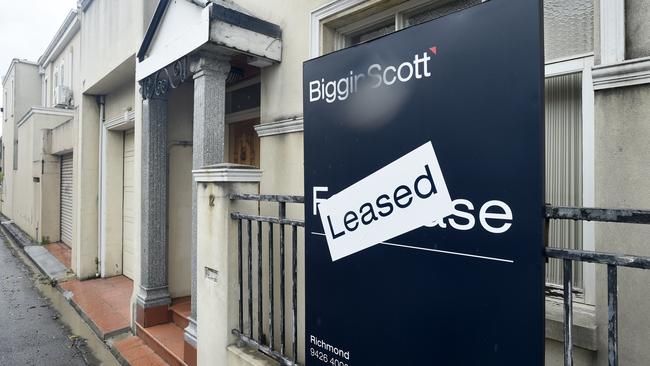Cost of living crisis driving national surge in suicide and distress risks
Advocacy groups are calling for urgent action on a troubling issue affecting almost half of Australians amid the cost of living crisis.

Breaking News
Don't miss out on the headlines from Breaking News. Followed categories will be added to My News.
Experts have called new data on the mental health and cost of living crisis “a wake-up call”, with reports revealing almost half of the nation is experiencing elevated distress.
Suicide Prevention Australia (SPA) released on Tuesday its state-by-state breakdown of the Community Tracker for the March quarter, revealing troubling results.
“The report that came out today on suicide prevention is a sort of national scorecard,” SPA acting chief executive Matthew McLean said.
“We know it’s in the two to three years after a crisis, like a pandemic or recession, that the risks of suicide are the highest.
“Now we’re in a critical window to give people extra help.”

Victoria had the sharpest rise in suicides, reporting an increase of 9 per cent in the 2022 calendar year.
This was closely followed by NSW with an increase of 5 per cent, with more than 100 deaths lost across the two states in that year alone.
Tuesday’s report shows cost of living ranked as the biggest risk to suicide rates nationally, with further increases in distress in housing affordability (up 23 per cent) and unemployment (up 21 per cent), particularly among middle-age and middle-wage Australians.
Social isolation and loneliness maintained its place as a major issue driving elevated distress levels.
“We know that when you’re struggling to put food on the table or keep a roof over your head you’re going to face elevated rates of stress,” Mr McLean said.
“Living pressures, recessions and other economic issues have a real impact on mental health and can really exacerbate risk factors around suicide.”
In the past 12 months one in six Australians have reported having serious thoughts of suicide, with three-quarters of the population experiencing elevated distress compared with the same time last year.

“As we look to the federal budget in May it couldn’t be a more important time to act and put in place extra help,” Mr McLean said.
“We need a laser light focus on suicide prevention.”
In this year’s federal budget SPA is calling for relief packages to support frontline services and crisis lines and additional funding to support groups most at risk, such as LGBTQI+, First Nations, men and older people.
“Our findings once again prove the clear link between the impact of rising economic and social pressures and distress levels in the community,” Mr McLean said.
“Every time I see these figures, it reminds me that each one represents a life and a cascade of grief amongst family and friends.”
Originally published as Cost of living crisis driving national surge in suicide and distress risks


